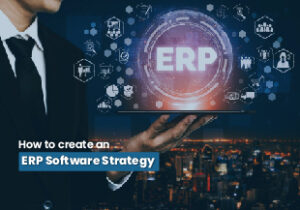Are you having trouble managing your garment manufacturing business efficiently? Imagine a world in which all of your activities function seamlessly, communication barriers disappear, and productivity skyrockets. This is feasible with the appropriate Garment Manufacturing ERP system. In today’s competitive industry, using out-of-date tools can slow you back. However, an ERP system designed for garment manufacturing can improve your company procedures and production.
Let’s look at how the appropriate Garment Manufacturing ERP may transform your operations and set you apart in the business.
What is a Garment Manufacturing ERP?
A Garment Manufacturing ERP is specialist software that manages all aspects of a garment manufacturing business. It integrates several operations, including inventory management, production planning, order monitoring, and financial management. This technology improves process efficiency by providing real-time data insights. It enables organizations to monitor and control processes in a single, consolidated system. With the increasing complexity of garment manufacturing, investing in an ERP system is no longer a luxury; it is a requirement.
Why Do Garment Manufacturers Need an ERP System?
Streamlining Operations
Managing a clothing plant entails numerous divisions and tasks. Errors are unavoidable unless adequate coordination is maintained. An ERP system automates these operations, keeping everyone on the same page. For example, if inventory runs low, the system can immediately notify the purchasing staff. This minimizes delays and keeps production going.
Improved Productivity
A properly implemented Garment Manufacturing ERP eliminates repeated tasks. Employees devote more time to value-added tasks rather than manual data entry. Automation allows jobs to be executed more quickly and accurately.
Better Decision-Making
ERP systems offer real-time information on production, sales, and expenses. Managers can make timely, informed decisions based on this information. This helps identify bottlenecks, control costs, and increase overall efficiency.
Features of Garment Manufacturing ERP
Inventory Management
ERP software manages raw materials, finished goods, and waste. This guarantees that you have the proper materials on hand when you need them, reducing stockouts and overstocks.
Production Planning
ERP systems enable to successfully arrange manufacturing schedules. By assessing demand and resource availability, the system optimizes timelines and avoids delays.
Order Management
Using an ERP system makes managing customer orders easier. It monitors each order’s progress from manufacture to delivery to ensure timely fulfillment.
Cost Control
A garment manufacturing ERP monitors spending and identifies cost-cutting opportunities. It gives a clear picture of profit and loss.
Compliance & Reporting
Garment makers frequently face strict requirements. ERP software makes compliance easier by automating reporting and ensuring correct data.
Advantages of Using A Garment Manufacturing ERP
Enhanced Efficiency
ERP solutions eliminate human errors while increasing overall efficiency. Employees can concentrate on strategic activities rather than administrative responsibilities.
Improve collaboration
When all departments use the same system, communication improves. Teams can get real-time updates, which ensures seamless communication.
Scalability
An ERP system adapts to growing workloads as your organization grows. Whether you expand operations or introduce new items, the system will help you grow.

Customer satisfaction
Customers are more satisfied when deliveries are on time and of consistent quality. ERP systems ensure that orders are completed as promised.
Data Security
Modern ERP solutions include powerful security measures. This ensures that sensitive corporate data is safe from breaches.
How to Select the Right Garment Manufacturing ERP?
Assess Your Needs: Before investing: identify your company’s difficulties. Do you struggle with inventory management or production delays? Choose an ERP system that meets your individual requirements.
Easy to Use: system needs to be user-friendly. Complicated software can result in low staff adoption rates.
Customization: Every clothing producer has different needs. Look for an ERP solution that can be modified to fit your specific business procedures.
Integration: Ensure that the ERP system works effectively with your current tools, like as accounting software or e-commerce platforms.
Vendor Support: Choose a company with a proven track record of delivering dependable support. Regular upgrades and troubleshooting support are required for efficient functioning.
Steps for Implementing a Garment Manufacturing ERP
Planning
Begin by defining your goals and identifying key stakeholders. Create a road map for implementation to reduce confusion.
Data Migration
Transfer existing data to the ERP system. Ensure accuracy during this step to avoid problems later.
Employee Training
Provide training sessions so that employees learn how to use the system successfully. Their engagement is critical to success.
Testing
Before going online, properly test the system. This aids in the detection and resolution of errors.
Go live and monitor
Once the ERP system is operating, keep track of its performance on a regular basis. Collect input to make changes.
Conclusion
Investing in the correct Garment Manufacturing ERP can completely revolutionize your business processes. From optimizing procedures to increasing production, an ERP system provides numerous advantages. It simplifies difficult processes, improves teamwork, and keeps you ahead in a competitive business. Take the time to examine your needs and select a solution that is appropriate for your organization. With the appropriate ERP, you can increase efficiency, make smarter decisions, and improve customer satisfaction.

